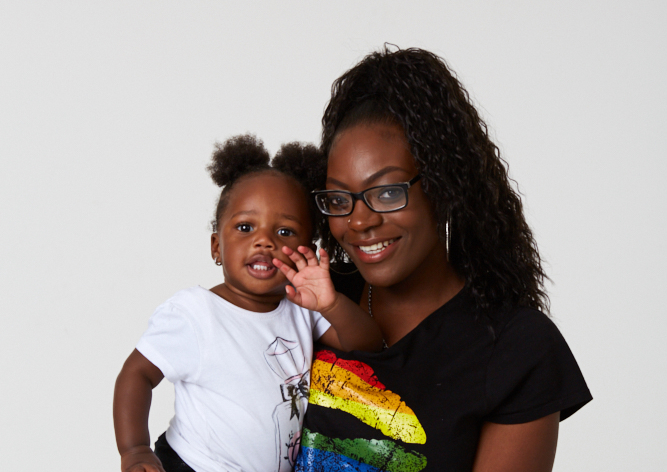Young Women’s Trust analysis shows pay inequality exists from the start of working life.
New research from the charity Young Women’s Trust shows that young women are losing out on over £5000 a year compared to young men because they’re being funnelled into low-paid jobs and sectors, and getting stuck at the bottom of the career ladder.
For young women aged 18-30, the gap in annual pay means that they earn a fifth less per year than a man of the same age.
This “income gap” grows as women get older. It differs from the gender pay gap which only looks at the difference in hourly pay, and masks the real divide between men and women’s pay over the course of a year which takes into account the effect of things like part-time work.
The new analysis was led by economists at Braw Data based on the ONS’ UK Labour Force Survey. It shows that around one-fifth of the annual income gap between young women and young men is down to young women going into industries where pay is lower overall, or where the jobs that women do are lower paid. For young women, the sector that is the biggest driver for the gap is information and technology – a higher paid industry which men are more likely to work in. Meanwhile, women are more likely to work in education, a lower-paid industry.
The top 6 lowest-paid industries where young women are concentrated are:
- Health and social work
- Wholesale and retail trade
- Hospitality
- Other service activities (this includes sectors that provide hair and beauty services, repair services and physical and wellbeing activities)
- Admin and support services
- Arts, entertainment and recreation.
The top 5 industries with the biggest pay gaps for workers aged under 30 are:
- Electricity and gas
- Financial and insurance
- Mining and quarrying
- Other service activities
- Professional, scientific and technical activities (this includes things like law, accountancy, engineering, management consultancy and PR).
About two thirds of the income gap comes down to women being paid less even when working in similar sectors and having similar characteristics to men – for example, a woman with children working in the same sector as a man would face more of a financial penalty.
Women are more likely to work fewer hours in part-time positions, which are lower paid and harder to progress in. Women with children also have their progression impacted when they take time out of the workplace, and they can face discrimination.
The research also found that young women are more likely to go to university to secure a degree, however this doesn’t translate into higher earnings. The data shows that if young men were as highly educated as young women, the income gap would be even bigger.
Furthermore, men seem to receive a higher premium for longer service than women – likely because men progress more quickly than women and end up in more senior positions.
Claire Reindorp, CEO at Young Women’s Trust, said: “This new analysis shines a light on the shocking pay inequality that’s there right from the start of working life for young women, which then has a ripple effect throughout their lives. Earning less to begin with means young women are more likely to take on debt and more likely to be trapped in poverty.
“Focusing on the official gender pay gap, which is based on hourly wages and only reported on by companies of over 250 staff, offers just a partial view of pay inequality. In laying bare the gulf in young women and young men’s annual incomes, we want to encourage government and employers to recognise the importance of tackling inequality at this crucial early stage. That means supporting young women to progress at work and ensuring equal pay, as well as fixing childcare and making flexible working more available.”
Ends/
Notes to editors
For more information or interviews please contact:
Hayley Richardson-Roberts, Communication Lead:
07495 981142 / [email protected]
The data was gathered by Braw using the following:
Office for National Statistics. (2022). Annual Survey of Hours and Earnings 21st Edition. UK Data Service.
https://www.ons.gov.uk/surveys/informationforbusinesses/businesssurveys/annualsurveyofhoursandearningsashe
Office for National Statistics. (2022). Quarterly Labour Force Survey, 2015 to 2019. 2nd Edition. UK Data Service. SN: 8588, DOI:
http://doi.org/10.5255/UKDA-SN-8588-2
Methodology: Gender pay gaps were estimated with multivariate modelling of both hourly pay and annual earnings for men and women, conditional on a range of individual, job and employer characteristics, using data from the UK Labour Force Survey collected by the Office of National Statistics.
About Young Women’s Trust:
Young Women’s Trust campaign for an equal world of work with and for anyone who faces misogyny and sexism, including trans women and non-binary people.
We support young women aged 18 to 30, who are living on low or no pay and want to build a better future. We campaign for young women’s equality in the workplace, explore the issues that young women face such as the income gap and discrimination and, through our research, examine the challenges young women face. Our work is supported by corporate partners and charitable grants as well as fundraising activities and donations. Young women are at the centre of the charity’s work: leading, designing and participating.

